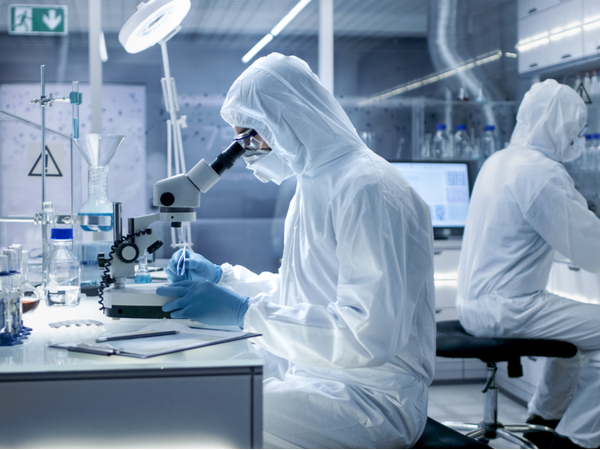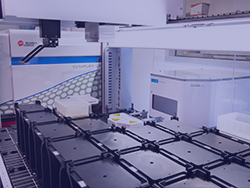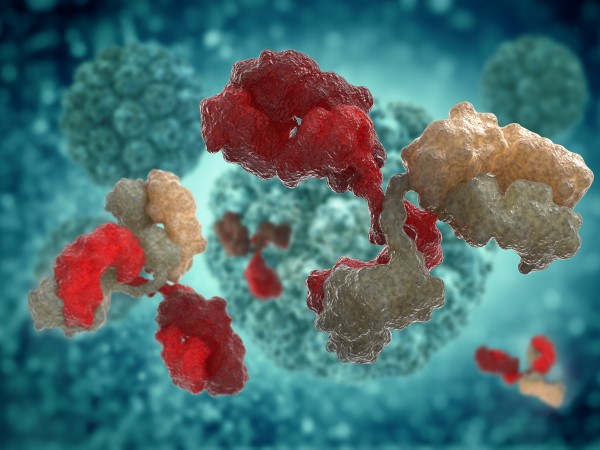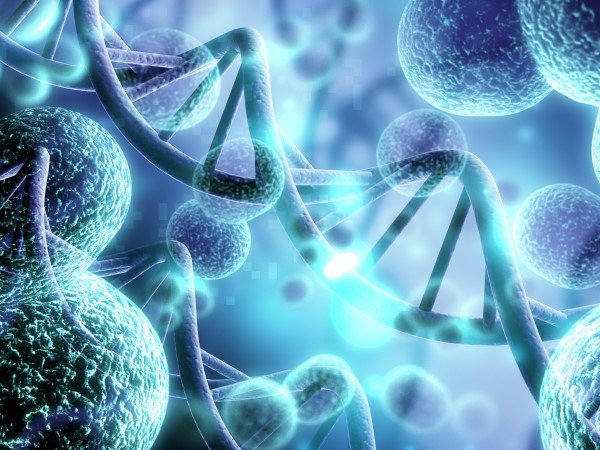Understanding the Immune Response
Characterization of the immune response requires detailed phenotypic assessment of the adaptive compartment comprising of T cells, B cells and dendritic cells as well as of the innate defense including monocytes and granulocytes. While the cellular phenotype reflects the differentiation and activation status, functional assays provide insight into the inducible response that immune cells may elicit to orchestrate more systemic immune responses. Flow cytometry, with its ability to simultaneously measure multiple phenotypic and functional parameters at the single-cell level, provides system-level understanding of the immune response.Solutions to Enable Your Immune System Research

Safer Sample Preparation
O-ring sealed Biosafe bucket covers and Biosafe Aerosolve canisters. Recover cells and other biologics faster.

Increase Throughput, Standardize Sample Prep
Increase throughput and standardize sample preparation for ELISA or flow cytometry analysis with laboratory automation systems that provide data tracking capabilities and enable 21 CFR Part 11 compliance.

Immunoprofiling and Immune Function Analysis
Study and characterize cells of the immune system across multiple sites with instrument standardization and tools for 21 CFR Part 11 compliance.

Sort Cells of the Immune System
Isolate cells of the immune system to evaluate and characterize a specific cellular response to antigens, small molecules, vectors and vaccines.

Functional Studies
Functional studies for drug discovery using direct dilution of compounds and biologics with the Echo acoustic liquid handler, an improvement over serial dilution.

Real-Time Visual Data Exploration
Visually inspect and prepare data for subsequent analysis. Identify known populations through hierarchical gating strategies, use overlays and comparison plots to compare expression patterns. Define custom sample reports and run batch analyses.

Machine Learning-Assisted Analysis
Use experimental variables to build dynamic figures to visualize complex data sets. Identify biomarkers and cell populations within complex data sets by using cloud computing for advanced machine learning assisted analysis, collaboration, storage and archiving required for securing critical data. Access results from any web-enabled device.
Tools to Enable Your Phenotyping Workflow
Leukocyte Overview
For assessment of basic lymphocyte subsets as well as subpopulations of monocytes
DURAClone IM Phenotyping Basic
Leukocyte Count and Viability
For absolute human leukocytes counting and viability
DURAClone IM Count
T Cell Maturation and Differentiation
For differentiation stages of human CD4+ and CD8+ T cells, such as naïve, memory and effector T cells
DURAClone IM T Cell Subsets
Regulatory T Cells
For identification & characterization of human FoxP3+CD25+ regulatory T cells
DURAClone IM Treg
T Cell Receptor Subtypes
For identification of the TCRs on the surface of mature T cells.
DURAClone IM TCRs
B Cell Maturation and Differentiation
For differentiation of stages of human B cells, such as naïve and memory B cells
DURAClone IM B Cell
Dendritic Cells
For identification of plasmacytoid dendritic cells and 3 major subsets of myeloid dendritic cells
DURAClone IM Dendritic Cell
Innate Myeloid Immune Cells
For human granulocyte subpopulations including expression of activation markers
DURAClone IM Granulocytes
Functional Assays
Inflammatory T Cell Response
For assessment of proinflammatory human T cell cytokine expression
DURAClone IF T Activation
Signature Cytokines T Helper Cell Subtypes
For T helper cell signature cytokine expression (Th1/Th2/Th17) in CD4+ T cells
DURAClone IF T Helper cell
Innate Immune Competency
For identification of TNFα-secreting and HLA-DR+ CD14+ monocytes
DURAClone IF Monocyte Activation
PMA, Ionomycin and BrefA Positive Control Stimulation
For use in cellular activation assays and detection of newly synthesized intracellular biomolecules
DURActive 1
LPS/BrefA Innate Immunity Stimulation
For use in cellular activation assays and detection of newly synthesized intracellular biomolecules

